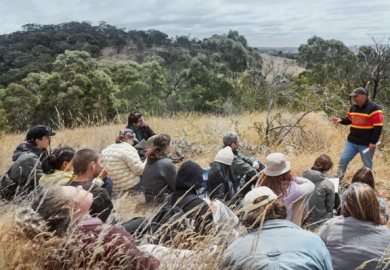From the establishment of Christianity throughout Europe, the dead were entombed in churches or buried in churchyards. Protestantism established burial grounds detached from churches, not merely for reasons of decency and hygiene, as is often imagined, but to destroy Roman Catholic belief and practices regarding the fate of the soul. Early examples of grounds physically set apart from churches were therefore found in Switzerland, parts of Germany and Scotland. Despite attempts by John Evelyn and others to promote spacious cemeteries outside London after 1665-66, England maintained connections between the Anglican Church and burial, not least for financial reasons, although by Georgian times “overspill” churchyards serving some parishes were provided. Suburban parish burial grounds also appeared in 18th-century Berlin and elsewhere, and during that century several European countries were obliged by necessity to bury the dead in grounds set apart from churches.
In the English landscape garden, embellished with mausolea, memorials and monuments, lay the model for the first large metropolitan cemetery, Père Lachaise in Paris, and that, in turn, provided the exemplar for the first great cemeteries on both sides of the Atlantic, notably Mount Auburn, Cambridge, Massachusetts; the General Cemetery of All Souls, Kensal Green, London; and the incomparable Glasgow Necropolis (all early 1830s).
In Italy, however, a type of cemetery evolved based on unrealised designs produced in the French Architectural Academies in Paris and Rome: these were enormous formal geometrical schemes of vast ranges of buildings in which bodies were entombed in loculi, and burial occurred in the grounds enclosed by those buildings. Chapels were heroically monumental, and the architectural language at first was Classical: exemplars included the Staglieno, Genoa, a magnificent conception, crammed with stunning sculpture set in the galleries where the dead lie in their appointed spaces.
Malone has investigated this building type, and brilliantly explored the complex relationship between architecture and politics. She shows how these splendid necropoleis were conceived as part of a massive transformation during conflicts between church and state, and describes their roles in the narratives and shifting cultural climates that helped Italy become a nation-state. As she is bilingual, she has been impressively successful in delving into archives: having himself come up against the impenetrable walls of Italian bureaucracy, this reviewer knows the difficulties, and salutes her for her tenacity in obtaining such marvellous material.
Conventional wisdom makes assumptions about Italy being a Roman Catholic country. This ignores the strength of Freemasonry, especially in the North, and the radicalism of much in the 19th-century peninsula when such medieval survivals as the Papal States under Pio Nono began to crumble under the onslaught of unification. Given that the Roman Church opposed cremation until 1963, Malone correctly stresses the adoption of cremation in many Italian cities from 1876, when anticlerical and radical groups adopted that mode of disposal before it was accepted in Britain, France or Germany, and demonstrates that the architecture of Italian crematoria was shaped in part by liberal attitudes as well as by the desire to render cremation acceptable through traditional aesthetics.
Informatively and comprehensively illustrated, impeccably referenced and written with wise and wide-ranging insights, this fascinating tome is a very important contribution to architectural, political and social history.
James Stevens Curl is a member of the Royal Irish Academy, and is the author of Freemasonry & the Enlightenment: Architecture, Symbols, & Influences, among many other scholarly books.
Architecture, Death and Nationhood: Monumental Cemeteries of Nineteenth-Century Italy
By Hannah Malone
Routledge, 262pp, £95.00 and £34.99 (e-book)
ISBN 9781472446817 and 9781315597485 (e-book)
Published 25 April 2017
Register to continue
Why register?
- Registration is free and only takes a moment
- Once registered, you can read 3 articles a month
- Sign up for our newsletter
Subscribe
Or subscribe for unlimited access to:
- Unlimited access to news, views, insights & reviews
- Digital editions
- Digital access to THE’s university and college rankings analysis
Already registered or a current subscriber?




